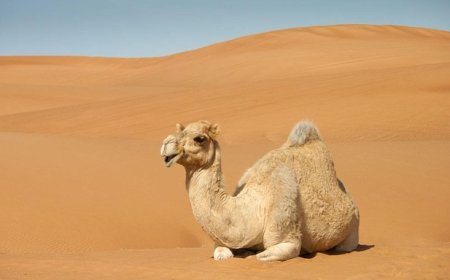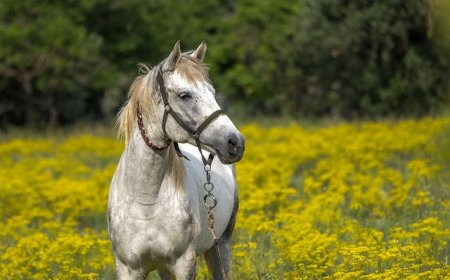All About Blue Whales for Students: Giants of the Ocean
Discover the amazing world of blue whales—the biggest animals on Earth—in this full educational article for students aged 8–16. Learn about their feeding, size, migration, and conservation. Includes quiz, vocabulary, and a kid-friendly summary!
🐋 Blue Whales: Giants of the Ocean
Blue whales are the largest animals to ever live—even bigger than any dinosaur. These gentle ocean giants can reach up to 100 feet long and weigh as much as 200 tons, which is equal to 30 elephants! Despite their enormous size, blue whales are known for their peaceful nature, slow swimming, and long migrations.
Blue whales belong to the group of baleen whales, which means they don’t have teeth. Instead, they use special structures in their mouths called baleen plates to filter food from the water. These ocean travelers live in all the world’s oceans and are a symbol of both the beauty and fragility of ocean life.
🌍 Habitat and Geographic Range
Blue whales are found in all the major oceans, including the:
- Pacific Ocean
- Atlantic Ocean
- Indian Ocean
- Southern Ocean (around Antarctica)
They spend part of the year in cold, polar waters, where food is abundant. In the winter, they migrate to warmer tropical or temperate waters to mate and give birth. These migrations can cover thousands of miles each year.
Blue whales prefer open waters, far from shore, and are rarely seen close to land unless they're migrating. Because of their long-distance movements, they are considered migratory marine mammals.
🦐 Diet and Feeding Behavior
Even though they are huge, blue whales eat some of the smallest animals in the ocean—tiny creatures called krill. Krill are shrimp-like animals that live in massive swarms. During feeding season, a single blue whale can eat up to:
- 4 tons (8,000 pounds) of krill per day
Blue whales feed using a method called filter feeding:
- They open their mouths wide and take in a huge gulp of water filled with krill
- Then they close their mouths and push the water out through their baleen plates
- The krill get trapped on the baleen and are swallowed
Feeding usually happens in cold waters during summer, and whales store energy in their blubber for the rest of the year when they eat much less.
🧥 Physical Features and Adaptations
Blue whales are perfectly adapted for ocean life:
- Their long, streamlined bodies help them swim efficiently
- Their skin is blue-gray with light spots, and they often look blue underwater
- Their baleen plates can number up to 800 and are made of keratin (like human fingernails)
- They have two blowholes on top of their heads to breathe
- When they surface, they release a spout of air up to 30 feet high
Blue whales can dive to depths of 500 meters (1,600 feet) and stay underwater for up to 30 minutes, though most dives last 10–15 minutes.
🗣️ Behavior and Communication
Blue whales are usually solitary or travel in pairs, but sometimes they are seen in small groups. They are known for their low-frequency vocalizations, which can:
- Travel hundreds of miles underwater
- Be used to communicate with other whales
- Help them navigate and find mates
Some of their calls are the loudest sounds made by any animal, reaching over 180 decibels underwater.
Although blue whales are calm and slow-moving, they can swim at speeds of up to 20 mph (32 km/h) when alarmed.
🍼 Reproduction and Life Cycle
Blue whales usually breed in warm waters during the winter months. After a pregnancy that lasts 11–12 months, the female gives birth to a single calf.
Newborn blue whales:
- Are about 20–25 feet (6–7.5 meters) long
- Weigh around 3 tons (6,000 pounds)
- Drink 100 gallons of milk per day
- Gain up to 200 pounds per day during their first year
Calves stay with their mothers for about 6–8 months, nursing and learning to swim and dive. Blue whales reach full adult size by age 10–15 years and can live to be 80–90 years old in the wild.
⚠️ Threats and Conservation
Blue whales were once hunted heavily for their blubber, oil, and baleen. In the 1900s, commercial whaling reduced their numbers by over 90%, and by the 1960s, they were near extinction.
🚨 Current threats include:
- Ship strikes – collisions with large vessels
- Noise pollution – affects communication and navigation
- Climate change – changes in ocean temperature may reduce krill populations
- Plastic pollution – ingestion or entanglement risks
- Oil spills and habitat disturbance
Today, blue whales are protected by international laws and conservation efforts, and hunting them is illegal. Populations are slowly increasing, but they are still classified as endangered by the IUCN.
🛡️ Conservation Efforts:
- Marine protected areas to reduce shipping traffic
- Tracking and monitoring with satellite tags and acoustic devices
- Raising awareness through eco-tourism and documentaries
- Supporting global organizations like the International Whaling Commission and NOAA
🎉 Fun Facts About Blue Whales
- A blue whale’s heart is the size of a small car
- Its tongue weighs as much as an elephant
- A baby blue whale is the largest baby born in the animal kingdom
- Its call can be heard over 1,000 miles away
- It can hold over 90 gallons of air in its lungs
🧠 Vocabulary List
- Baleen – Flexible plates used by whales to filter food from water
- Krill – Tiny shrimp-like animals eaten by whales
- Filter feeding – A way of eating by straining food from water
- Blubber – Thick fat layer for warmth and energy
- Migration – Traveling from one place to another seasonally
- Endangered – At risk of becoming extinct
- Spout – A spray of air and water from a whale’s blowhole
- Decibels – A unit to measure sound
- Solitary – Living alone
- Calf – A baby whale
✅ Blue Whale Quiz: Think Big!
1. What do blue whales mostly eat?
A. Fish
B. Seaweed
C. Krill
D. Sharks
2. How do blue whales eat their food?
A. With sharp teeth
B. Using baleen to filter krill
C. With claws
D. By sucking in sand
3. How big can blue whales grow?
A. 10 feet
B. 40 feet
C. 70 feet
D. Up to 100 feet
4. What is a threat to blue whales today?
A. Icebergs
B. Loud underwater noise and ship strikes
C. Too many fish
D. Volcanoes
5. What is the baby blue whale called?
A. Pup
B. Calf
C. Cub
D. Chick
🧒 Kid-Friendly Summary
Blue whales are the biggest animals on Earth—even bigger than dinosaurs! They live in oceans around the world, eating tiny krill by filtering water through their baleen. Even baby whales are huge and grow fast by drinking lots of milk from their mothers.
Blue whales were once almost extinct, but today people are helping them recover. They are quiet, gentle giants that play a big role in the ocean—and remind us how amazing nature can be!




















































